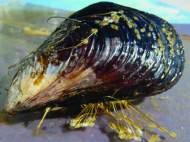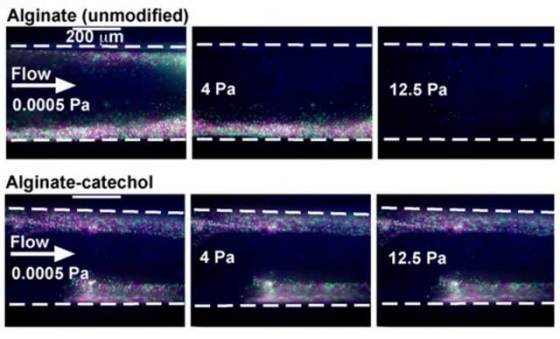Mussel glue inspires bioadhesive gel for blood vessels
 An interdisciplinary team of researchers, led by researchers from MIT and Harvard University, has been inspired by mussels and their ability to cling to rocks, piers and boat hulls, to develop a bioadhesive gel that may find its use in various medical applications. Current version of the gel enables it to be painted onto the walls of blood vessels and stick there, thus forming a protective membrane with potentially life-saving implications.
An interdisciplinary team of researchers, led by researchers from MIT and Harvard University, has been inspired by mussels and their ability to cling to rocks, piers and boat hulls, to develop a bioadhesive gel that may find its use in various medical applications. Current version of the gel enables it to be painted onto the walls of blood vessels and stick there, thus forming a protective membrane with potentially life-saving implications.
The researchers hypothesized that a material which mimics the mussel’s underwater adhesion could be used to adhere to blood vessels under blood flow. The adhesive gel was synthesized based on alginate – a polysaccharide that forms a biostable and generally biocompatible hydrogel, and catechol which provides sites for cross-linking and adhesive properties.
“By mimicking the mussel’s ability to cling to objects, we created a substance that stays in place in a very dynamic environment with high flow velocities”, said Christian Kastrup, Assistant Professor at the University of British Columbia who developed this gel while being at his postdoctoral studies at MIT.
The gel is similar to the amino acid that enables mussels to resist the power of churning water and its sheer strength could shore up weakened vessel walls at risk of rupturing. This shear strength was measured both in a micro-fluidic device that mimicked aspects of the vasculature and in a lap-shear tensile strain test. The micro-fluidic device was constructed as a simplified model of the vasculature in order to simplify the control of the channel size, flow, and shear stress, and as a tool to develop a catheter-based approach for delivering the gel.
Measured adhesive shear strength of the gel was several times higher than that generated by physiological blood flow. The shear strength of the gel to the artery two to three orders of magnitude higher than physiological shear stress. The tests also revealed that moderate concentrations of the gel did not cause significant toxicity to cultured cells in vitro or measurable toxicity in vivo.
The developed synthetic materials were directly coated inside blood vessels with high spatial control, remained adherent for over a month, and reduced inflammation in atherosclerotic plaques.
Testing in large animals, such as pigs, by delivering materials that reduce inflammation and increase the thickness of the fibrous cap is an important next step before it gets to clinical applications. Degradation of alginate occurs more rapidly when it is oxidized, and the rate of degradation of alginate-catechol at atherosclerotic plaques over months or years is yet to be determined.
Researchers found out that a degradable adhesive gel (hyaluronan-catechol), could be coated on blood vessels and degraded on the time scale of days, thus creating an option to use this technology in order to deliver therapeutics to any area of the vasculature that is accessible by a catheter. It could also be used to heal damaged vessels, deploy intravascular glues, strengthening the vessel walls of aneurisms, and delivering anticancer drugs to vessels feeding tumors. Future work will need to explore the type of therapeutics that can be delivered, including small molecules, proteins, nucleic acids, and stem cells.
For more information, you can read the article published in the online journal PNAS Early Edition: “Painting blood vessels and atherosclerotic plaques with an adhesive drug depot” [1.4MB PDF].










Leave your response!